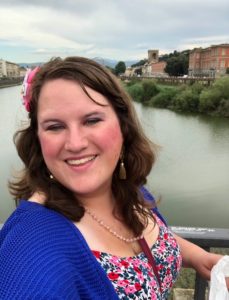There is a strong “verbal-centrism” in our culture’s concept of language and communication today. Just as there are many spoken languages in different cultures, there are equally as many non-verbal expressions varying from culture to culture.
When I think of a young child who has difficulty with speech and verbal language, I can feel how difficult it is for them to express themselves in the “conventional” method; that is, using words. Yet their brain is wired in such a way that they cannot access the idea of words. Instead they may need visual media or pictures to communicate. We humans rely almost entirely on words to express ourselves which makes us insensitive to the fact that there are other languages or forms of communication.
One begins to wonder: why and how are words unique to human expression and interaction?
The answer is this: All animals communicate, but only humans have words and a formal language.
As a neurodivergent human being who is both a verbal and visual learner, I tend to think that both are necessary for a person to move along through the vicissitudes of life and both should be given equal attention.
However, how about those individuals who find it a challenge to be in that middle ground? Like a lot of people with speech problems and other development delays, children on the autism spectrum can manifest this characteristic as well, and often favor “one over the other” in terms of important concepts and/or traits. For many ASD individuals, the visual world has provided a safe haven for those who are less verbally inclined.
Art is a popular therapy for spectrum children, and especially art which features repetitive themes or concretely geometrical rather than abstract patterns. As someone who intends to enter the field of art therapy, I wish to assist people in need using a variety of methods such as color blending, shapes and angles, and facial expression. These combined into one will help harness the individual’s ability to express themselves visually in a spatial and social sense.
The truth holds that persons with language development problems are still human beings, and we as a society need to work to be aware that not all human beings have verbal language. After all, when a child is born they do not possess that skill. A baby communicates in other ways.
Language, like any ability or skill, does vary from human to human, and some may never develop language to communicate. There is a strong “verbal-centrism” in our culture’s concept of language and communication today. Just as there are many spoken languages in different cultures, there are equally as many non-verbal expressions varying from culture to culture.
The idea of language perception differs from individual to individual, just the way everyone’s point of view is unique. In today’s society, the concept of verbal language appears to be valued over non-verbal communication, especially with the availability of communication devices and various means of socialization.
I believe that anyone who does struggle or grapple with verbal language can learn to grasp it eventually; the way that social norms place expectations on human beings is often oppressive to many, and we must understand that each one of us, whether neurotypical or neurodivergent, is unique.

Sofia Mochon-Ciniglio is a freelance writer and Braille transcriber for the visually impaired community and is aspiring to work with the American Print House. She is very motivated to lead or guide others who identify as differently abled. Aside from work, she is an avid traveler and has a keen interest in art, food, music, fashion and design.








